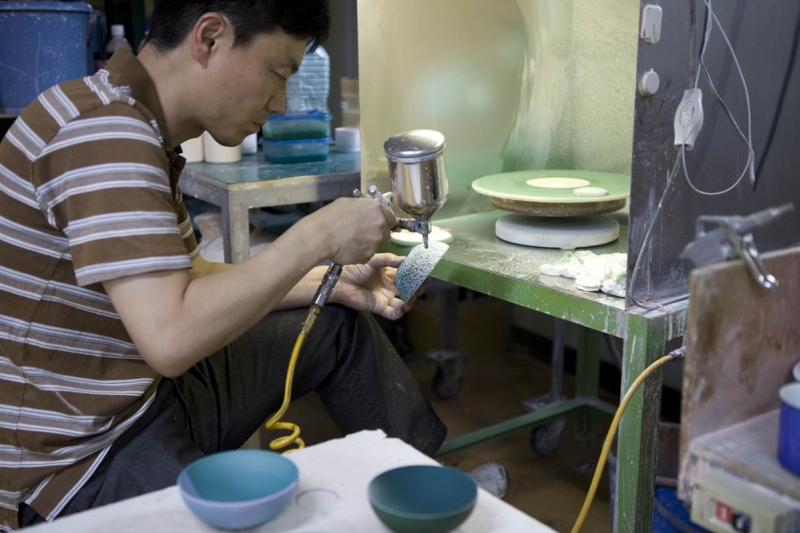Interview: Mr. Shiro Kawazoe, Kawazoe Seizan
The Kawazoe Seizan Pottery in Imari can trace its founding all the way back to the Nabeshima clan. Over the centuries, the pottery has remained true to the refined and elegant Nabeshima style of ceramics. Now, however, Kawazoe Seizan pottery has accepted the challenge set by 2016/ and broken away from their expected style in order to explore new areas. Shiro Kawazoe, the current head of the pottery, talks to us about what he has learned along the way.
- Kawaze Seizan Pottery is related to the Nabeshima clan and is renown for a hand painting technique that covers the full surface of the porcelain vessel. But the collection you have produced for 2016/ is entirely white and does not feature any painting whatsoever. Why have you made such a significant change?
The future of our traditional craft is in doubt and the 2016/ project presents an interesting opportunity to produce something totally new that I might not have come up with myself. It widens our perspective. The results, made in cooperation with designer Stefan Diez, are products without any painting, not even celadon. We have never made such products before. Also, my attitude towards the management of the pottery has been changed due to this project: Previously our pottery has been producing low volume porcelain for direct sales but for 2016/ we have successfully made mass-production standard tableware.
- Is this collection from Stefan Diez only produceable by Kawazoe Seizan Pottery?
Rather than Kawazoe Seizan pottery alone, I think it is a case of us collaborating with the skills of local craftsmen. We had to get 100% out of our production system in order to make these designs by Stefan Diez. The labour of producing porcelain in Arita is divided amongst specialists and we worked together with mold makers and drapers (who create shapes from the clay and the mold). So cooperation between companies was important, as was consolidating our know-how in manufacturing.
What was especially difficult about the collection was that is has 26 individual items, many more than other collections. And all the items that Diez designed have no traditional ‘stands’. That means that the solid bottom can cause shrinkage problems. The edges of the vessels are thin and typically the thinner the surface is, the higher the risk of deformation. It was an extremely difficult process to adjust manufacture to allow for shrinkage for each of the 26 shapes. In addition, Diez requested a thinness of 1mm and was very exacting. I have devoted more than 18 months just to getting this project right.
- Are you very enthusiastic about the 2016/ project?
In order to cope with mass production, we relocated our workshop, that my father had been running for 47 years, from the Okawachi mountain to Arita. There was some anxiety about moving away from the familiar and old kiln in our previous workshop. But the Arita union has a good tunnel kiln with high production efficiency more suited to mass-production, we cooperate with 5 potteries to use it. Helpfully, there are also injection molding machines on the same site.
This relocation was a big decision for our pottery; we have new staff, the environment has changed and we are now cooperating with many more people than we did previously. It is as if we have begun again. At first we thought only of the initial impact of working on 2016/ and its launch at the Milano Salone, but now we are working hard, in full force, so that this opportunity does evolve and change our company for the better.
- What have you learnt by taking part in this project? What have you gained?
I have always loved the traditional work of Nabeshimaware (I paint myself) and the great motifs and shapes that were born out of innovation 300 to 400 years ago. But through this project we have discovered that a completely different world can spread out in front of you when you step out with courage. This challenge will help us develop a new culture of porcelain pottery for the next 100 to 200 years.
Photo by Anneke Hymmen










